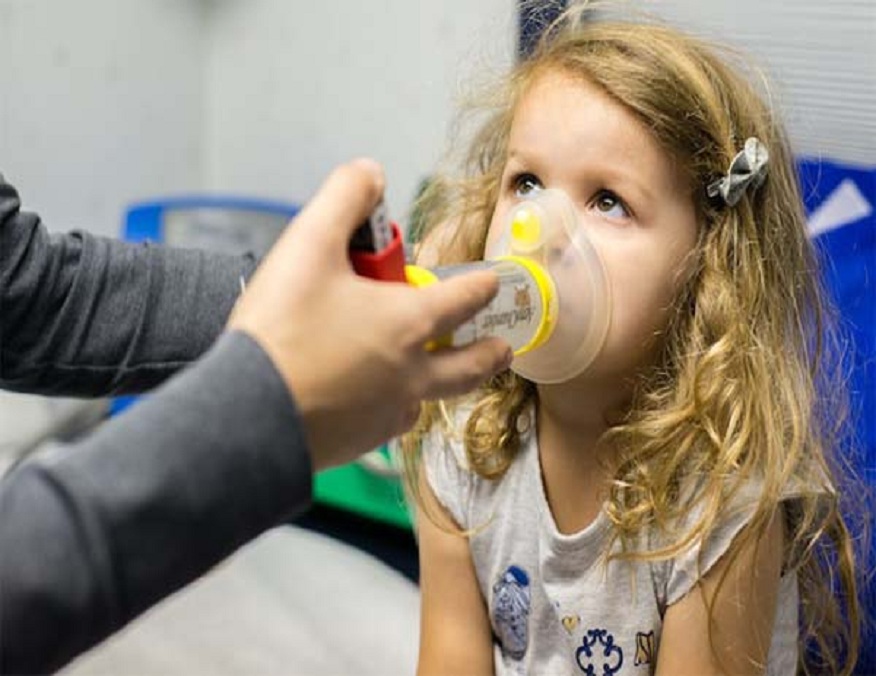While physical exercise is important for children’s general health and well-being, for some children with asthma, it can cause symptoms to flare up and make breathing challenging. Asthma brought on by exertion is referred to as EIA. It’s critical to identify and treat your child’s asthma properly if they exhibit symptoms during or after physical activity.
In this post, we’ll go over how to spot exercise-induced asthma in children as well as offer advice on where to contact an asthma specialist doctor in Manchester.
Learning about Exercise-Induced Asthma (EIA)
Airways narrowing and the emergence of asthma symptoms during physical activity are characteristics of exercise-induced asthma. It affects both youngsters with underlying asthma and those who have never had respiratory problems. Children with EIA may suffer weariness, chest tightness, wheezing, coughing, or shortness of breath while exercising.
How to Recognize Exercise-Induced Asthma
For optimal management, it is essential to be aware of the symptoms of exercise-induced asthma. If your kid routinely has asthma symptoms during or after physical activity but not at other times, it may be a sign of EIA. To ensure a comprehensive assessment and precise diagnosis, speak with a medical expert, such as a pediatric asthma physician.
Finding an Asthma Specialist in Manchester
It’s critical to choose a Manchester asthma specialist who is competent while looking for specialized care for your child’s asthma. The following steps will assist you in finding a qualified healthcare provider:
- Inquire about Referrals: Inquire about Manchester asthma experts from your child’s health care physician, neighbourhood hospitals, or dependable friends and relatives.
- Searching Online: Find local asthma experts by using internet directories and search engines. To focus your search, use phrases like “pediatric asthma doctor near me” or “asthma specialist in Manchester”.
- Check credentials: Verify credentials Verify the credentials and experience of the possible specialists on your list. Consider pediatric pulmonology or allergy and immunology board certification as these fields frequently deal with the management of asthma.
Read Reviews: To learn more about other families’ experiences working with the asthma experts you are considering, read patient reviews and testimonials. This can provide important details about their knowledge, interpersonal skills, and level of concern.
Managing Asthma Caused by Exercise
Fortunately, asthma brought on by exercise may be efficiently controlled, allowing kids to engage in physical activity without risking their respiratory health. Make sure to use these crucial tactics while looking for a pediatric asthma specialist nearby when you search for one:
Create a plan of action for asthma
- Pre-exercise medicine use: If your kid has to take pain relievers or bronchodilators before exercising, the plan will make that clear. These drugs aid in clearing the airways, preventing the onset or exacerbation of asthma symptoms.
- Exercises for warming up: The specialist’s recommended warm-up activities may be included in the plan. Warm-ups assist in preparing the airways and reduce the possibility of EIA symptoms when exercising.
- Emergency protocols: The action plan will clearly outline when and how to seek medical help or utilize emergency drugs in the event of a severe asthma attack or increasing symptoms.
Use the Correct Medicines
Before exercise, bronchodilators such as short-acting beta-agonists (SABAs) are frequently used as emergency pain relievers. These drugs quickly relax and widen the airways, facilitating better breathing during exercise. It’s crucial to adhere to the specialist’s time and dose recommendations.
Promote stretching and cooling down
- Warm-up: Encourage your youngster to perform a brief warm-up routine before beginning any activity. This might involve stretching, breathing exercises, or mild aerobics. Asthma symptoms are less likely to develop during the primary exercise session because of a gradual increase in intensity that prepares the airways.
- Cool-down: Make sure your youngster includes a cool-down interval after finishing the workout. To gradually drop heart rate and enable the airways to return to normal, this may include mild stretching and slower movements. An abrupt airway constriction and post-exercise discomfort can be avoided by cooling down.
Determining Appropriate Activities
- Factors related to the environment: Some sports or places are more likely than others to aggravate asthma symptoms. Some children with EIA may experience issues with cold air, high pollen counts, or exposure to airborne irritants (such as chlorine in swimming pools). Engage in activities with your child that reduce their exposure to these triggers. Make sure to question them about these things if you searched for “asthma specialists near me” on Google.
- Sports with intermittent bursts: Sports like basketball, gymnastics, or martial arts might be appropriate for kids with EIA since they require occasional bursts of exertion. The stress on the airways is lessened by these activities, which allow for brief relaxation intervals.
- Consider team sports: Playing team sports might be advantageous since they frequently have built-in pauses and provide opportunities for teammates and coaches to offer help in controlling asthma symptoms.
Conclusion:
To ensure that youngsters can continue to engage in physical activity, exercise-induced asthma must be identified and treated. You can make sure your child’s respiratory health is well-managed by being aware of the symptoms and seeking the advice of an asthma specialist in Manchester. Children with exercise-induced asthma can live full, active lives while maintaining control over their asthma symptoms with the right care.

